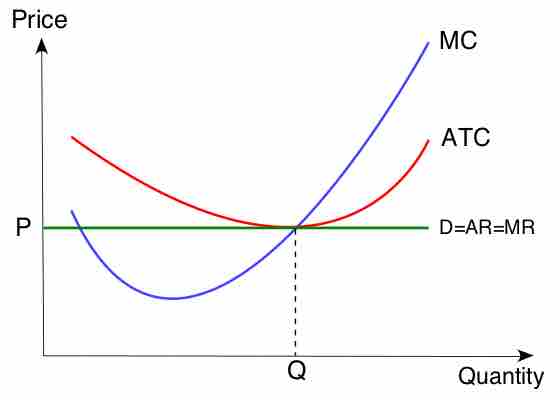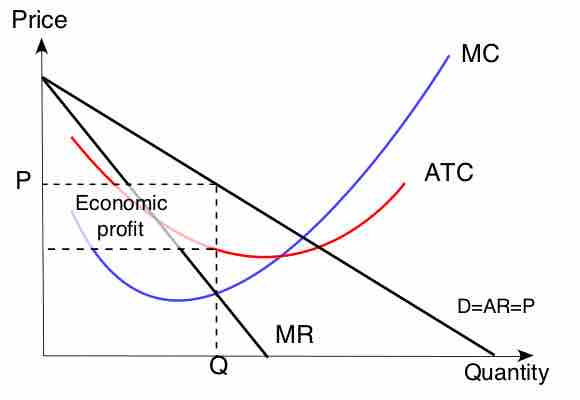Economic profit is total revenue minus explicit and implicit (opportunity) costs. In contrast, accounting profit is the difference between total revenue and explicit costs- it does not take opportunity costs into consideration, and is generally higher than economic profit.
Economic profits may be positive, zero, or negative. If economic profit is positive, other firms have an incentive to enter the market. If profit is zero, other firms have no incentive to enter or exit. When economic profit is zero, a firm is earning the same as it would if its resources were employed in the next best alternative. If the economic profit is negative, firms have the incentive to leave the market because their resources would be more profitable elsewhere. The amount of economic profit a firm earns is largely dependent on the degree of market competition and the time span under consideration.
Competitive Markets
In competitive markets, where there are many firms and no single firm can affect the price of a good or service, economic profit can differ in the short-run and in the long-run.
In the short run, a firm can make an economic profit. However, if there is economic profit, other firms will want to enter the market. If the market has no barriers to entry, new firms will enter, increase the supply of the commodity, and decrease the price. This decrease in price leads to a decrease in the firm's revenue, so in the long-run, economic profit is zero . An economic profit of zero is also known as a normal profit. Despite earning an economic profit of zero, the firm may still be earning a positive accounting profit.

Long-Run Profit for Perfect Competition
In the long run for a firm in a competitive market, there is zero economic profit. Graphically, this is seen at the intersection of the price level with the minimum point of the average total cost (ATC) curve. If the price level were set above ATC's minimum point, there would be positive economic profit; if the price level were set below ATC's minimum, there would be negative economic profit.
Uncompetitive Markets
Unlike competitive markets, uncompetitive markets - characterized by firms with market power or barriers to entry - can make positive economic profits. The reasons for the positive economic profit are barriers to entry, market power, and a lack of competition.
- Barriers to entry prevent new firms from easily entering the market, and sapping short-run economic profits.
- Market power, or the ability to affect market prices, allows firms to set a price that is higher than the equilibrium price of a competitive market. This allows them to make profits in the short run and in the long run. This situation can occur if the market is dominated by a monopoly (a single firm), oligopoly (a few firms with significant market control), or monopolistic competition (firms have market power due to having differentiated products). .
- Lack of competition keeps prices higher than the competitive market equilibrium price. For example, firms can collude and work together to restrict supply to artificially keep prices high.

Long-Run Profit for Monopoly
In the long run, a monopoly, because of its market power, can set a price above the competitive equilibrium and earn economic profit. If price were set equal to the minimum point of the average total cost (ATC) curve, the monopoly would earn zero economic profit. If the price were set lower than the minimum of ATC, the firm would earn negative economic profit.